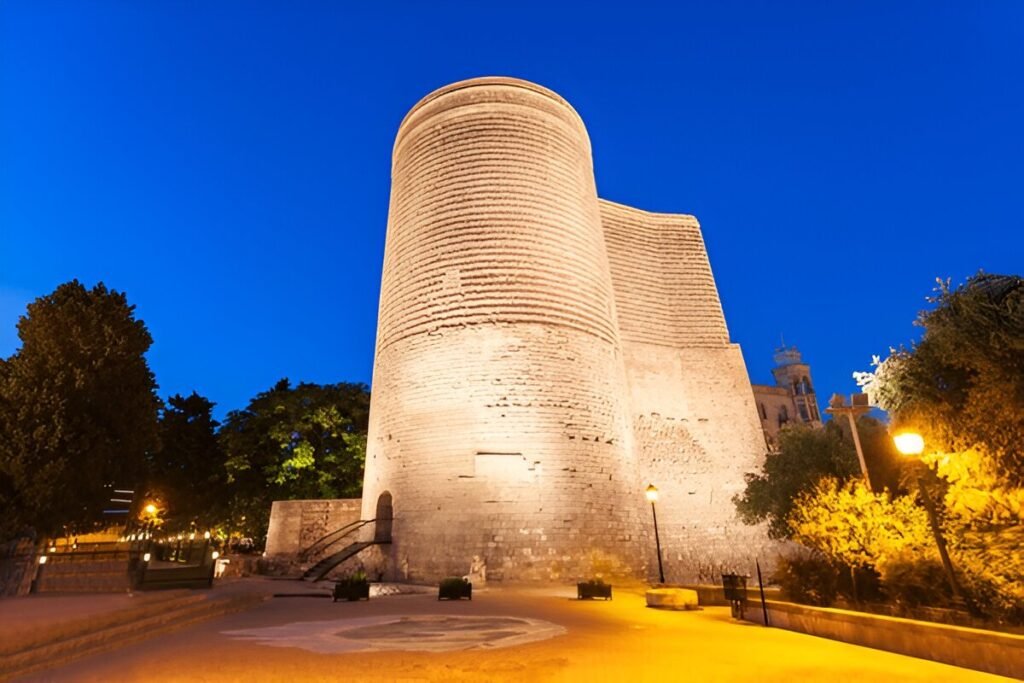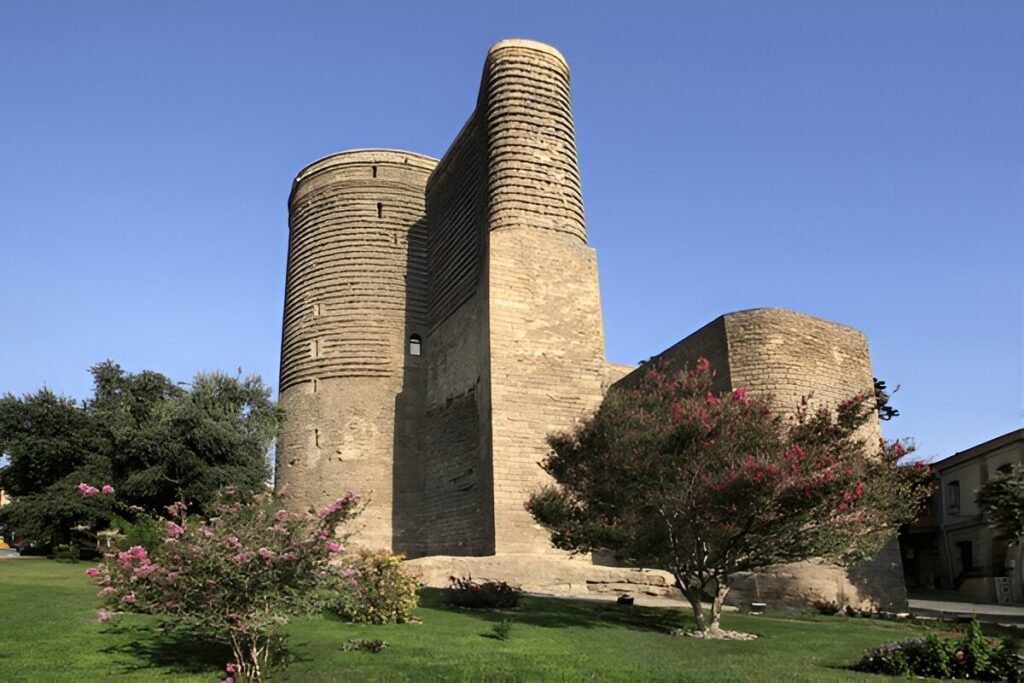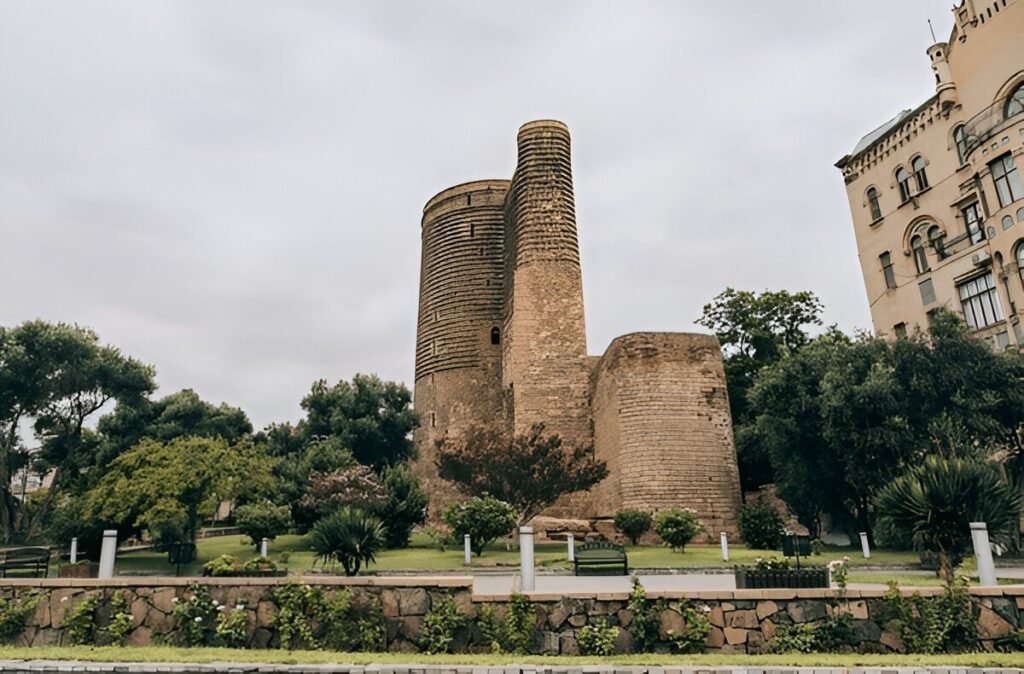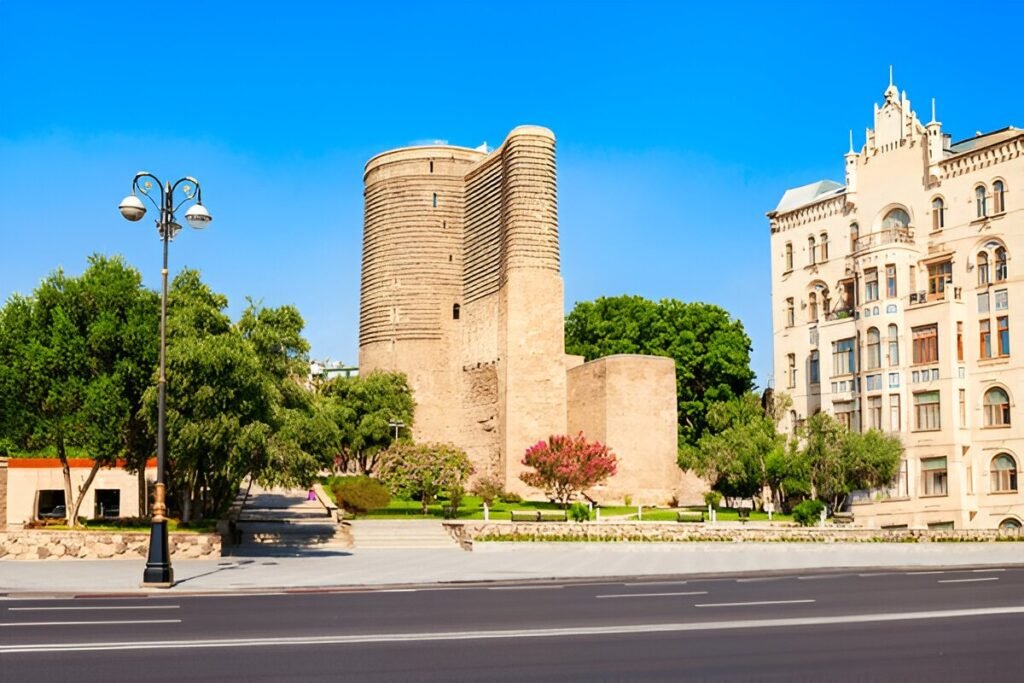Introduction
Amidst the bustling streets of Baku’s historic Icherisheher (Old City), the Maiden Tower stands as a symbol of Azerbaijan’s rich history and enduring spirit. This enigmatic structure, a UNESCO World Heritage Site, has intrigued visitors for centuries with its architectural splendor and captivating legends. Whether viewed as a fortification, a religious monument, or a symbol of love and sacrifice, the Maiden Tower remains one of Baku’s most cherished landmarks.
The Architectural Splendor of the Maiden Tower
The Maiden Tower, locally known as Qız Qalası, rises majestically to a height of 29.5 meters (97 feet). Its cylindrical shape, sturdy limestone walls, and unique design make it an architectural marvel. The structure comprises eight levels connected by a spiral staircase, with narrow slits allowing light to penetrate the interior.
Historical Origins
The exact origins of the Maiden Tower remain a mystery. Historians and archaeologists estimate its construction to date back to the 12th century, though some evidence suggests earlier foundations from as far back as the 5th or 6th centuries. Its purpose has also been widely debated. Theories range from it being a fire temple used in Zoroastrian worship to a watchtower designed to protect the city from invaders.
A Strategic Location
Situated on the shores of the Caspian Sea, the Maiden Tower served as a vantage point for observing potential threats and navigating maritime routes. Its commanding presence within Baku’s Old City underscores its historical importance as part of the city’s fortifications.
Legends of the Maiden Tower
What truly sets the Maiden Tower apart is the wealth of legends that surround it. These tales, passed down through generations, reflect Azerbaijan’s folklore and cultural values.
The Tragic Tale of Love and Sacrifice
One of the most famous legends tells the story of a king who intended to marry his own daughter. Desperate to escape this fate, the princess devised a plan. She asked her father to build a tall tower and promised to marry him upon its completion. Once the tower was built, the princess climbed to its top and leapt into the Caspian Sea, choosing death over dishonor.
This legend lends the tower its name, “Maiden Tower,” symbolizing purity, sacrifice, and unyielding will.
The Fire-Worshiping Legend
Another theory connects the Maiden Tower to Zoroastrianism, an ancient religion that revered fire as a sacred element. According to this belief, the tower may have been a fire temple where eternal flames burned as part of religious rituals. Its proximity to Baku, historically known as the “Land of Fire,” supports this interpretation.
The Myth of the Maiden’s Return
A lesser-known legend speaks of a maiden trapped inside the tower by an invading force. She prayed for divine intervention, and the gods answered by transforming her into a white dove, allowing her to escape and reunite with her loved ones. This story highlights themes of hope, resilience, and the power of faith.
The Maiden Tower in Azerbaijani Culture

The Maiden Tower is more than an architectural landmark; it is deeply ingrained in Azerbaijan’s identity. It has inspired countless works of art, literature, and music, becoming a symbol of love, courage, and national pride.
Featured in Art and Literature
Prominent Azerbaijani poets and writers, such as Nizami Ganjavi and Samad Vurgun, have drawn inspiration from the Maiden Tower in their works. The tower’s mysterious aura and timeless appeal continue to influence contemporary art and storytelling.
A Symbol of Modern Baku
Today, the Maiden Tower is featured on Azerbaijani currency, stamps, and souvenirs, symbolizing its enduring significance as a national icon. It serves as a bridge between the past and present, reminding both locals and visitors of the rich heritage of Azerbaijan.
Exploring the Maiden Tower

Visiting the Maiden Tower is a journey through history, offering a unique perspective on Baku’s evolution over the centuries.
The Museum
The Maiden Tower houses a museum, where visitors can explore exhibits showcasing the history of Baku and the tower itself. Artifacts, photographs, and interactive displays provide insights into the region’s culture and the tower’s multifaceted role.
The Panoramic View
Climbing to the top of the tower is a must-do activity. From its rooftop, visitors are rewarded with breathtaking panoramic views of Baku’s Old City, the shimmering Caspian Sea, and the modern skyline, creating a striking contrast between past and present.
Nighttime Illumination
At night, the Maiden Tower is beautifully illuminated, highlighting its intricate stonework and casting a golden glow over the surrounding area. The tower’s nighttime ambiance adds a magical touch to its already captivating presence.
The Maiden Tower and UNESCO

In 2000, the Maiden Tower, along with the Icherisheher and the Palace of the Shirvanshahs, was inscribed as a UNESCO World Heritage Site. This recognition underscores the tower’s architectural and cultural significance as part of Baku’s historic fabric.
Preserving the Legacy
Efforts have been made to preserve the Maiden Tower and its surroundings, ensuring that future generations can continue to admire this iconic structure. Restoration projects have focused on maintaining its structural integrity while enhancing the visitor experience through modern facilities and informative displays.
Conclusion
The Maiden Tower is more than just a historic monument; it is a beacon of Azerbaijan’s cultural heritage and resilience. Its mysterious origins, captivating legends, and timeless beauty make it a must-visit destination for anyone exploring Baku.
Whether you’re drawn by its architectural splendor, intrigued by its folklore, or simply seeking a panoramic view of the city, the Maiden Tower offers an unforgettable experience. As you stand atop this iconic structure, gazing out at the vibrant streets of Baku and the vast Caspian Sea, you’ll feel a profound connection to the history and spirit of Azerbaijan.
The Maiden Tower invites you to uncover its secrets, celebrate its stories, and embrace the timeless charm of Baku’s most enduring symbol.












